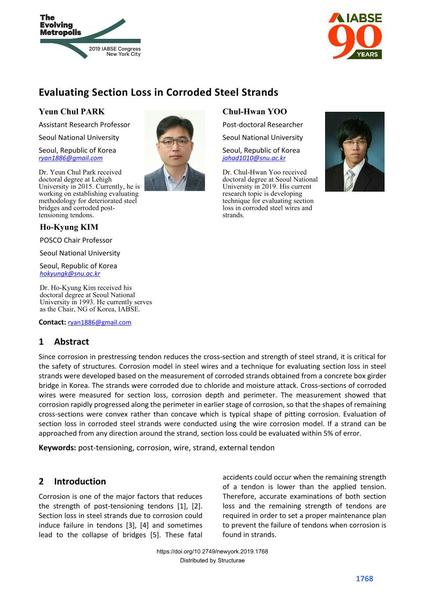Evaluating Section Loss in Corroded Steel Strands

|
|
|||||||||||
Détails bibliographiques
| Auteur(s): |
Yeun Chul Park
(Seoul National University)
Chul-Hwan Yoo (Seoul National University) Ho-Kyung Kim |
||||
|---|---|---|---|---|---|
| Médium: | papier de conférence | ||||
| Langue(s): | anglais | ||||
| Conférence: | IABSE Congress: The Evolving Metropolis, New York, NY, USA, 4-6 September 2019 | ||||
| Publié dans: | The Evolving Metropolis | ||||
|
|||||
| Page(s): | 1768-1771 | ||||
| Nombre total de pages (du PDF): | 4 | ||||
| DOI: | 10.2749/newyork.2019.1768 | ||||
| Abstrait: |
Since corrosion in prestressing tendon reduces the cross-section and strength of steel strand, it is critical for the safety of structures. Corrosion model in steel wires and a technique for evaluating section loss in steel strands were developed based on the measurement of corroded strands obtained from a concrete box girder bridge in Korea. The strands were corroded due to chloride and moisture attack. Cross-sections of corroded wires were measured for section loss, corrosion depth and perimeter. The measurement showed that corrosion rapidly progressed along the perimeter in earlier stage of corrosion, so that the shapes of remaining cross-sections were convex rather than concave which is typical shape of pitting corrosion. Evaluation of section loss in corroded steel strands were conducted using the wire corrosion model. If a strand can be approached from any direction around the strand, section loss could be evaluated within 5% of error. |
||||
